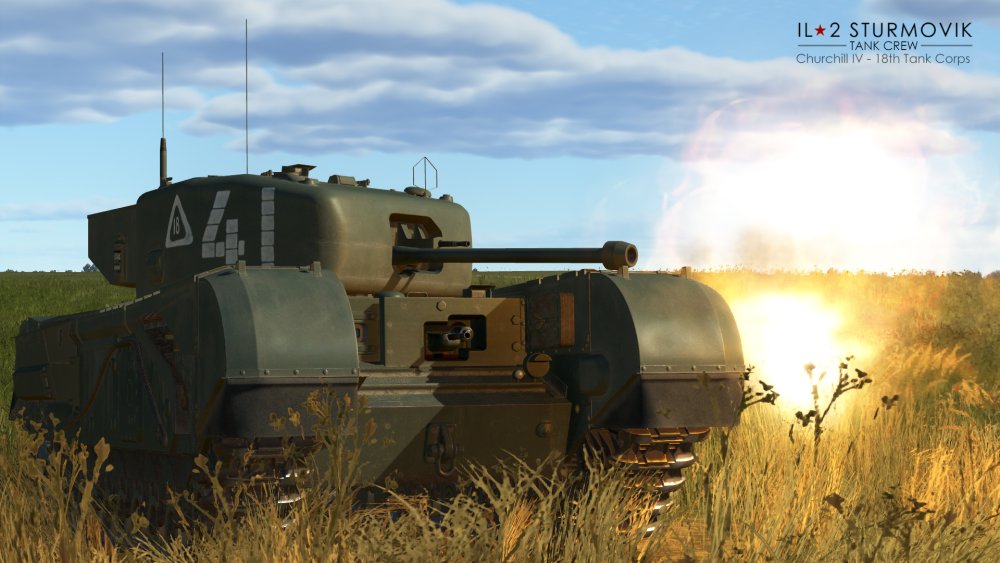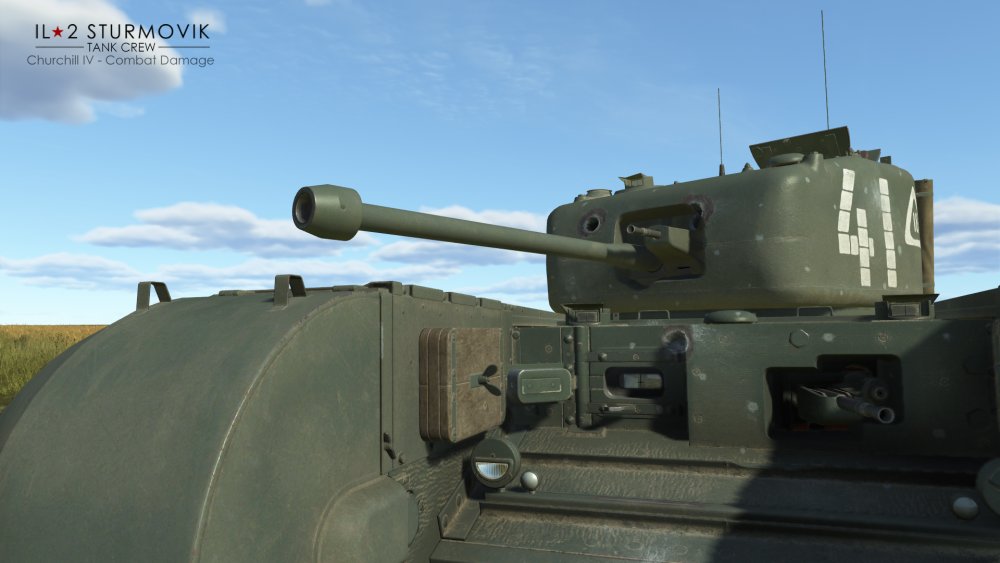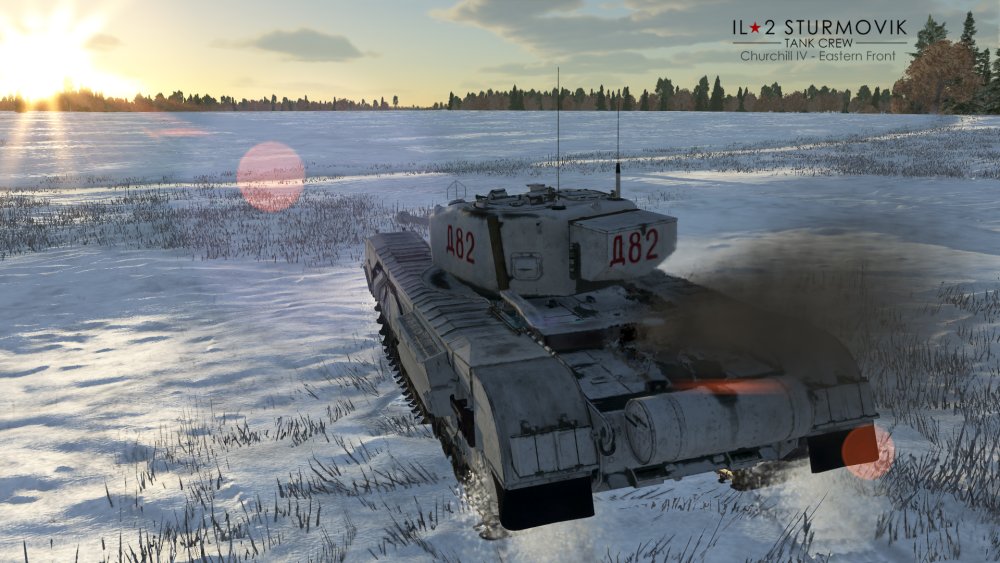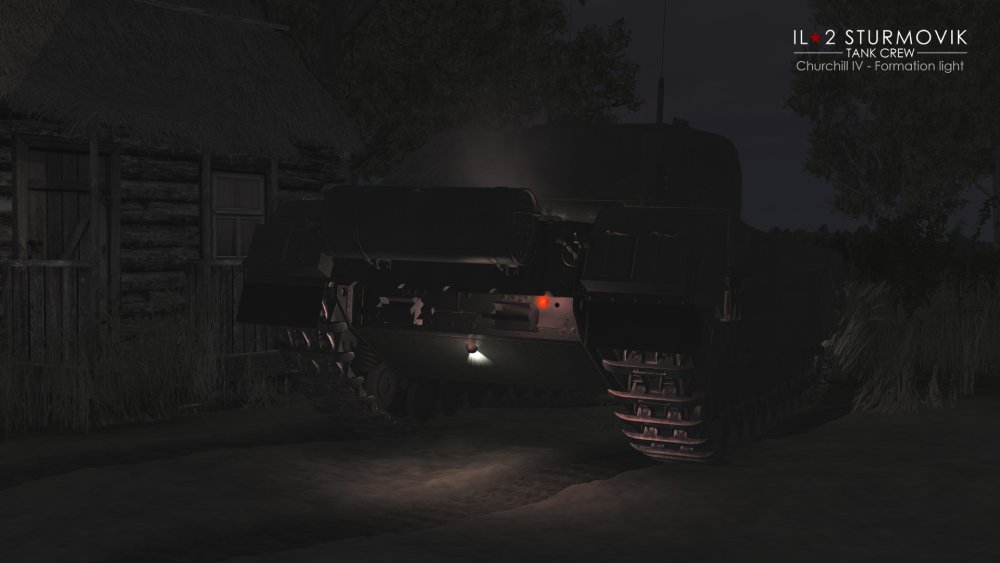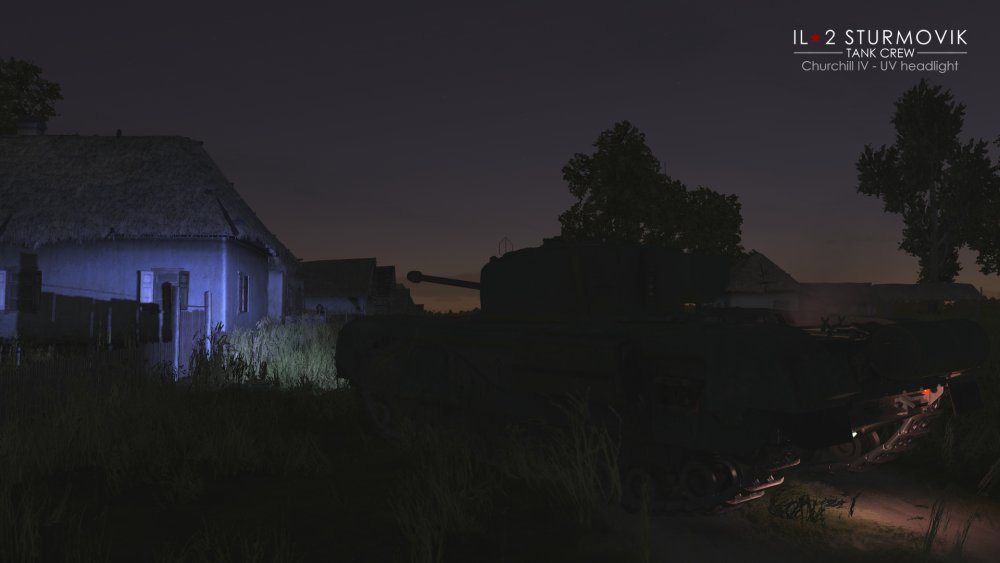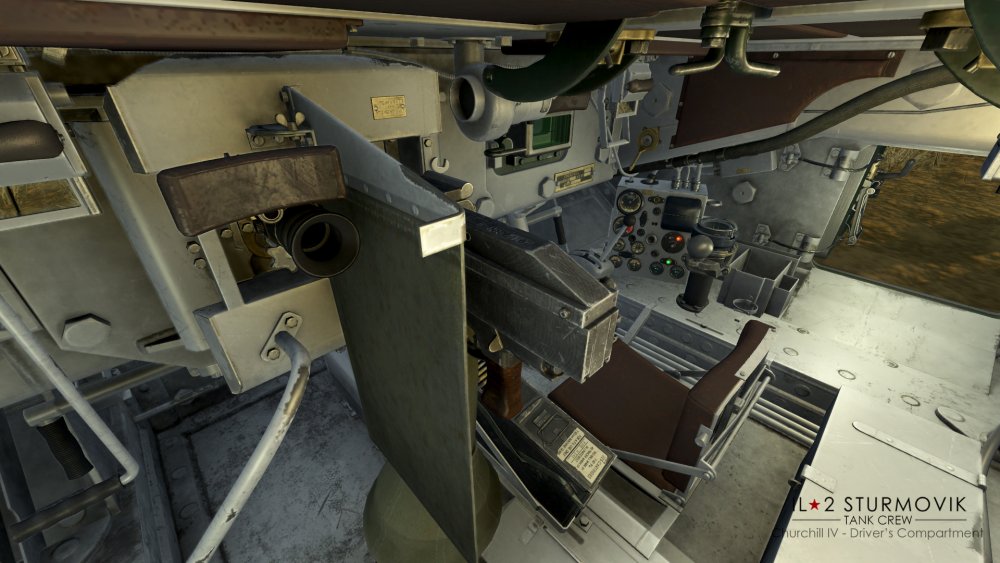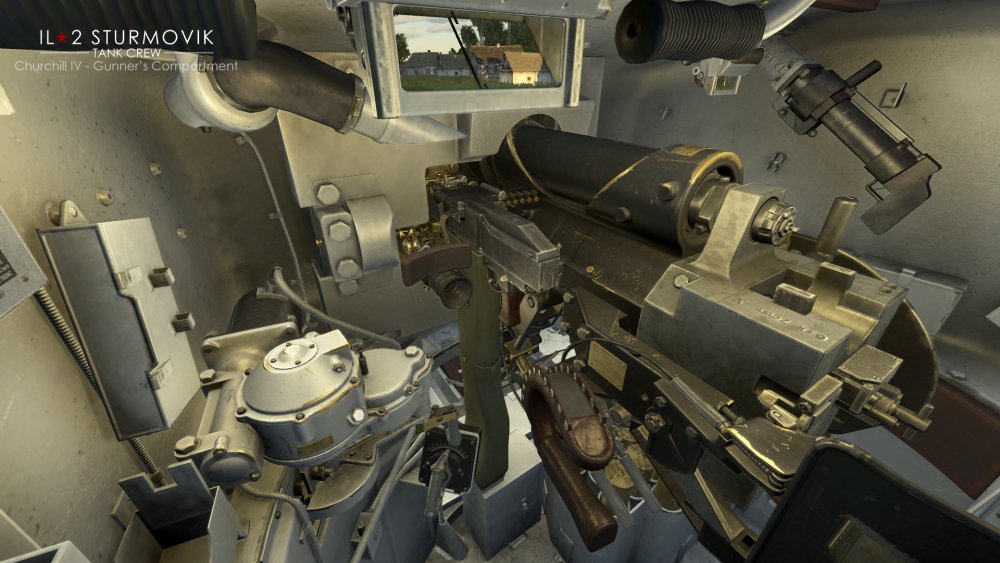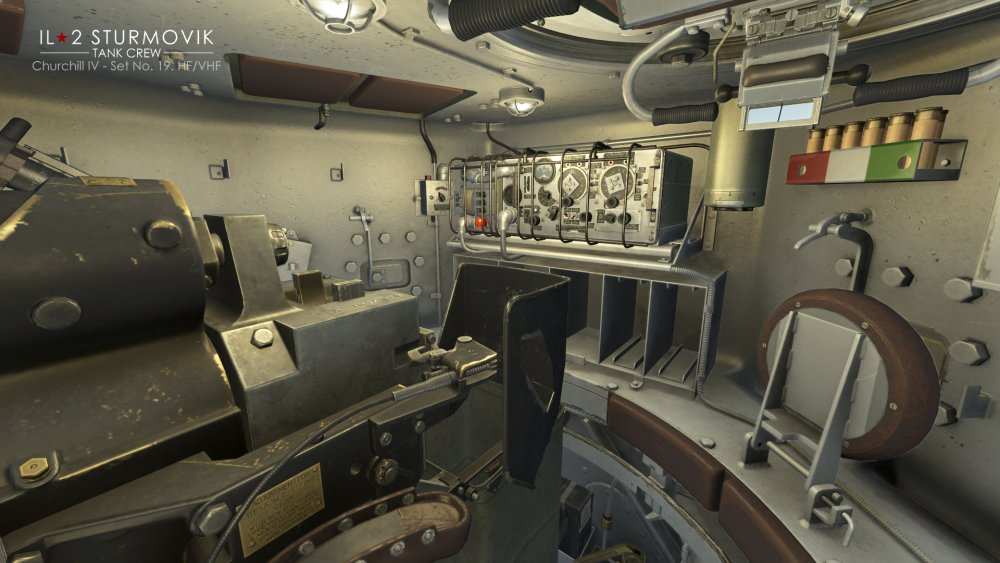IL-2 STURMOVIK: GREAT BATTLES - Update 26.08.22
IL-2 STURMOVIK: GREAT BATTLES - Update 26.08.22
While we are testing the Normandy release candidate, work is underway on other projects, which are scheduled for release a little later. In particular, the new Churchill IV player-controllable tank is in the final stage of development for the Tank Crew project. Supplied to the Soviet Union under the Lend-Lease program, this tank was an active participant in the events on the Kursk Bulge. During our work on it, we and our partners from Digital Forms have implemented a lot of its design features and equipment. It was an extremely difficult tank to develop because it has a very specific design with a complex armor scheme, an intricate track assembly, a variety of additional equipment, and rather specific crew working conditions. To better describe it, here is an excerpt from its in-game description:
The Churchill tank belonged to the class of infantry tanks developed by the British Army. According to this classification, the Churchill had low mobility and hardly the most powerful weaponry, but it was protected with powerful armor, and thus belonged to the class of heavy tanks. The tank was produced in England throughout the war years and was one of the most numerous armored vehicles in His Majesty’s troops. The variant featured in the game was produced by the Leyland factory.
The first batch of early modification Churchill tanks under the Lend-Lease program was delivered to the USSR by the infamous Arctic convoy PQ-17. In total, 301 Churchill tanks were sent to the USSR during the war years, of which a little less than 50 vehicles were lost during transportation. 253 tanks were delivered to the Red Army during 1942 and 1943. The Churchill was the only heavy tank model supplied to the USSR by the Allies.
Churchills took part in the battles on the southern face of the Kursk Bulge in the summer of 1943. There, as part of the 2nd Guards Tatsinsky Tank Corps, they fought against the German Totenkopf and Das Reich Panzer Divisions. Alongside, on the same section of the frontline, Churchills served with the 18th Guards Stalingrad Tank Corps and the 18th Tank Corps.
The assessments of the tank in the Red Army were contradictory. Along with good armor, the cannon’s penetrating efficiency, a reliable radio station, and convenient observation devices, there were many problems with reliability, insufficient mobility, and the absence of high-explosive fragmentation shells in the ammunition load.
The main armament of the tank was the Ordnance Quick-Firing (QF) 6-pounder 7 cwt cannon. Two versions of this gun were installed on the tank: Mk.III with a 43-caliber long barrel and Mk.V with a 50-caliber long barrel (the game features the Mk.V variant). The only type of cannon shell featured a fairly high armor penetration. However, it was solid, i.e. did not feature a bursting charge, and this significantly reduced its after-penetration effect. Also, the lack of high-explosive fragmentation shells in the ammunition load was reducing the range of tasks carried out by the tank.
From a technical perspective, the Churchill’s track assembly was quite peculiar and somewhat reminiscent of that of the famous British diamond-shaped pioneer tanks of the First World War, with the tracks covering the hull from above. This made it possible to include additional hatches along the sides that made it easier to abandon the vehicle in an emergency. Each of the 11 road wheels on either side of the tank had an individual spring suspension. However, only 6 middle ones of 11 were under load in the normal position. The hull armor was complex, comprising many rolled-steel armor parts assembled on the frame with rivets and bolts. The key feature of the Churchill IV, which distinguishes it from the previous modifications, was the turret made based on a single cast part with a thin-walled spare parts box attached to its rear, and the gun mantlet featured an original “internal” design with no parts protruding from the turret.
The tank was also equipped with a 2-inch mortar fixed on the roof of the turret, on the loader’s side. Normally, it was intended for remote smoke screen deployment with 2-inch smoke grenades fired at a distance of about 400 meters in the direction same as that of the tank gun. In the war reality of the Eastern Front, the Red Army often used Soviet-produced 50-mm high-explosive fragmentation rounds as ammunition for 2-inch English mortars. Besides the mortar, the tank is equipped with two pyrotechnic smoke dischargers mounted on the rear. They allow the tank to deploy a smoke screen within a minute and a half.
FONTE https://forum.il2sturmovik.com/topic/168-developer-diary/?do=findComment&comment=1208348
Simulatori
- Falcon BMS
- East Mediterranean Front Theater
- IL-2 Sturmovik
- DCS World - Eagle Dynamics
- DCS: F-16C Viper
- DCS: Ka-50 Black Shark
- DCS: A-10C Warthog
- DCS: P-51D Mustang
- DCS: MIG-21BIS
- DCS: F/A-18C Hornet
- DCS: Combined Arms
- Microsoft Flight Simulator
- Altri simulatori
Reparti AMVI
- SMAV
- Comando Squadra Aerea
- Comando Scuole
- Reparto Affari Generali
- Reparto Sperimentale Volo Virtuale
- Gruppo Falcon
- Gruppo Hornet
- Gruppo IL2
- Gruppo Black Shark
- Gruppo Warthog
- Gruppo Radar
- Accademia
- RACSAV
- Vola con AMVI






